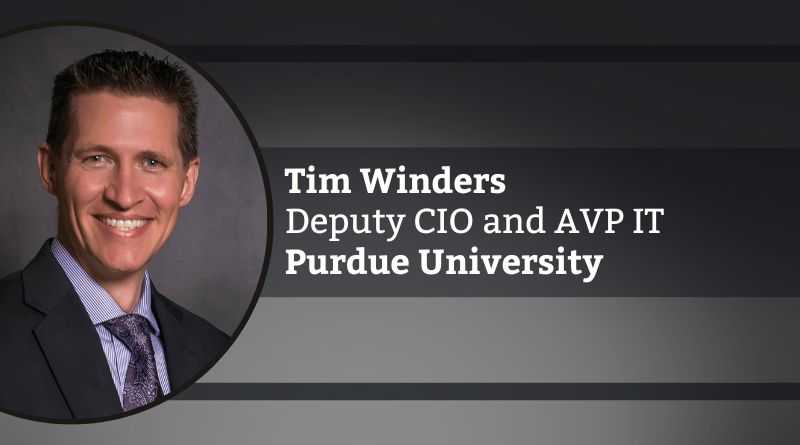Managing Organizational Change – How Purdue University IT is driving excellence through transformation
By Tim Winders, Ph.D., Deputy CIO and Assistant Vice President for Information Technology, Purdue University
The days of employees working for the same employer for decades before retirement are mere memories for most industries. In higher education, that type of longevity remains commonplace. It’s not unusual to find employees who have worked for the same university for 20+ years. In fact, it’s actively encouraged through annual celebrations, service awards and, for faculty, tenure. While that type of retention has its benefits, it also contributes to stagnation.
A desire to maintain the status quo, to press forward with entrenched methods, and to passively resist change are hallmarks of higher ed. However, organizational change is necessary if today’s institutions want to sustain themselves in the future. This is no less true in the field of information technology within higher education.
What contributes to meaningful change? It begins with leaders who embrace and drive progress through a top-down, bottom-up model. In addition to having leaders who initiate change from the top, there needs to be a free flow of information where employees at all levels can bring ideas to the table. The best way to avoid resistance to new implementations is for everyone to adopt a problem-solving mindset with a two-way flow of ideas.
The road to organizational change is rarely a smooth one. Change is scary, and many people inherently resist it. However, change can also be exciting, given the right environment, empowerment, and support.
Reset the culture.
Leaders must create a culture where individuals do not simply tolerate change but become comfortable with it. Employees become change agents themselves, and eventually, the thought of maintaining the status quo will cause discomfort.
- Empower individuals at all levels.
Encourage everyone in the organization to bring forward new ideas. Implement the best ideas and address concerns with those that are set aside. - Ask questions.
How can we fit this into our organization? What problem are we trying to solve with this change? - Emphasize purpose.
Tie changes to specific problems and solutions.
At Purdue University Information Technology, we’re in the thick of organizational change. Previously, Purdue had several IT organizations distributed across the university – embedded in colleges, regional campuses, etc. – each with their own processes and technology. Individually, each of these units was doing well for themselves, but duplication of services is inefficient for a system.
In April 2023, we transitioned all distributed units into one unified Purdue IT organization. We are zooming out to determine how we can best deliver IT services across the entire system to deliver excellence at scale. With a focus on people, processes, and technology, we are rethinking how we function together.
People: In the past year, Purdue IT has invested heavily in professional development throughout the organization. We have embraced the foundation of ITIL at all levels. We are actively engaging staff in change management workshops and employ a model of Intent-Based Leadership by which authority is pushed to information.
Process: We are reflecting on why we are doing things a certain way and if that method still serves the organization and our collective goals. We are asking what problems we are trying to solve and exploring how we can change the process to optimize, and in some cases automate, to eliminate waste steps across the enterprise.
Technology: In addition to replacing legacy technology and investing in upgrades to aging infrastructure, we are also innovating how we drive new technologies to create the best experiences for our students. One such example is the recent adoption of mobile ID credentials for students.
The road to organizational change is rarely a smooth one. Change is scary, and many people inherently resist it. However, change can also be exciting, given the right environment, empowerment, and support. At Purdue IT, we are embarking on this change to create an organization that is rooted in the ideas of excellence and delivering premier solutions for our customers.
Change takes courage. Organizations cannot be afraid to rip things apart and break them in order to put them together stronger than they were before. Examine whether you would build an organization the same way if you were creating it from scratch today. If not, consider what you might change and pursue that.
The key is moving forward with intentionality and clearly communicating not just the what – but also the why – with staff each step of the way.

